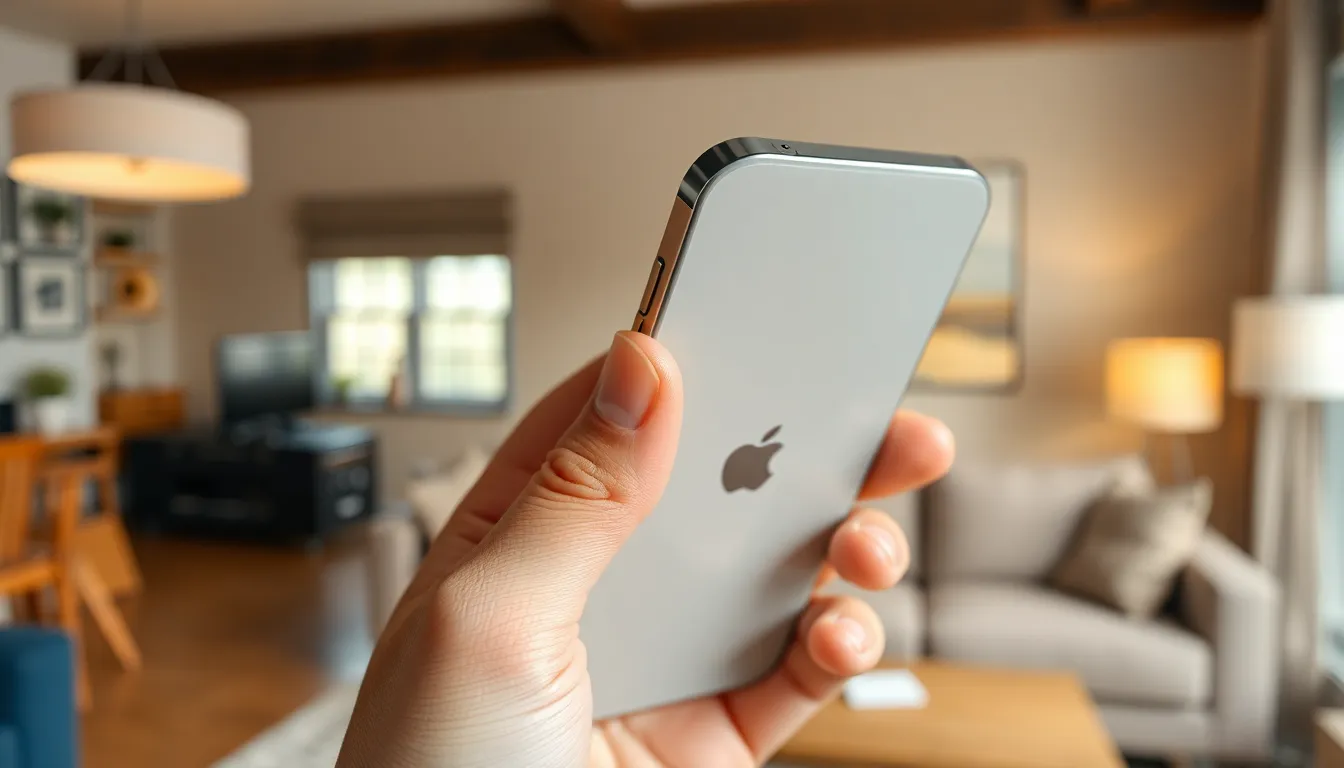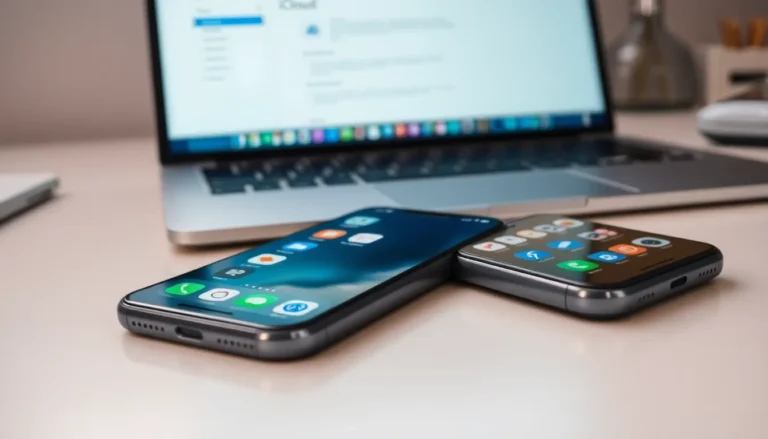In a world where smartphones seem to have a mind of their own, knowing how to turn off an iPhone 15 can feel like cracking a secret code. With all the bells and whistles packed into this sleek device, it’s easy to forget that sometimes less is more—especially when you need a break from notifications that never stop buzzing.
Table of Contents
ToggleUnderstanding the iPhone 15
Technology surrounds users with many features in the iPhone 15. It offers advanced functionalities, intuitive design, and comprehensive connectivity options. Siri operates seamlessly, allowing users to manage tasks hands-free. Users can engage with apps, send messages, or take photos with unmatched ease. The display showcases vibrant colors and high-resolution graphics, enhancing visual experiences.
Users must recognize the importance of maintaining balance amid constant notifications. Devices often distract from personal moments and focus. Taking time away can foster mental clarity and recharge batteries, both literally and figuratively. Simple tasks like turning off the device can bring meaningful breaks.
Managing settings plays a crucial role in navigating the iPhone 15. Users find various options for customization in the Settings app. Configuring notifications helps allocate attention to essential messages. Understanding privacy settings ensures user safety in an interconnected world.
The intuitive interface of the iPhone 15 simplifies daily interactions. It encourages exploration, allowing users to discover features like FaceTime, iMessage, and Health apps. Achieving efficiency comes from optimizing settings to fit individual preferences. Knowing these aspects empowers users to maximize their experience while using the device.
An awareness of usage patterns contributes to healthier tech habits. Engaging with the device thoughtfully cultivates mindfulness. This awareness encourages individuals to choose when to disconnect, fostering a healthier relationship with technology.
Step-by-Step Guide

Turning off an iPhone 15 involves straightforward methods that anyone can follow easily. Below are two primary methods for powering down the device.
Method 1: Using the Buttons
Press and hold the side button along with the volume up or down button. This action will activate the power-off slider on the screen. Drag the slider from left to right, and the iPhone 15 will turn off. Releasing the buttons before sliding won’t trigger the power off. If the device shows the emergency SOS option instead, ensure that you’re firmly pressing both buttons simultaneously. This method is quick and effective for immediate shutdown.
Method 2: Using Settings
Open the Settings app on the iPhone 15. Scroll down and select the “General” option. Here, find the “Shut Down” button at the bottom of the General menu. Tapping “Shut Down” will display the power-off slider. Slide it from left to right to turn off the device. This method provides an alternative for users who prefer navigating through the interface compared to using buttons for power down.
Troubleshooting Common Issues
Turning off an iPhone 15 may sometimes prove challenging. Some users encounter issues where their device won’t respond properly.
Problem: iPhone Won’t Turn Off
An unresponsive iPhone can frustrate users. Various factors like software glitches or held buttons contribute to this issue. Sometimes, apps running in the background may prevent powering down. Additionally, a low battery can create difficulties. Users should check for any system updates, as running an outdated OS might lead to performance issues.
Solution: Force Restart
A force restart can help resolve many problems. To execute this, quickly press and release the volume up button. Then, quickly press and release the volume down button. Lastly, press and hold the side button until the Apple logo appears. This process often resets background processes, allowing the device to turn off effectively. Users can repeat the steps if the first attempt doesn’t work.
Tips for Efficient Usage
Customizing settings optimizes the iPhone 15 experience. Notifications can disrupt focus, so adjusting preferences reduces distractions. Users often find success managing app notifications to prioritize important alerts. Balancing app usage encourages mindful technology interactions.
Exploring the iPhone 15’s features provides additional efficiency. Utilizing Siri for hands-free commands streamlines tasks. Users can make appointments or send messages without the need for constant screen interaction. Taking advantage of features like FaceTime and iMessage enhances communication while reducing dependency on physical texting.
Monitoring usage patterns helps identify excessive screen time. Awareness fosters healthier habits, allowing users to disconnect during personal moments. Setting daily time limits on apps encourages a balanced approach to technology. Regular breaks prevent burnout while maintaining connectivity.
Ensuring privacy settings are up-to-date protects personal information. Users can adjust permissions for apps, enhancing security. Regularly reviewing app access helps create a more secure environment. Effective management contributes to a smoother iPhone experience during daily activities.
Restarting the device regularly may resolve performance issues. A simple restart can rejuvenate app responsiveness and eliminate glitches. Following the force restart method addresses unresponsive behavior, restoring functionality quickly. Implementing these practices creates a more efficient and enjoyable iPhone 15 use.
Turning off an iPhone 15 may seem like a simple task but it plays a vital role in managing device usage and maintaining a healthy relationship with technology. By understanding the straightforward methods to power down the device users can take necessary breaks from constant notifications and distractions.
This intentional disconnect not only enhances personal moments but also promotes a more mindful approach to technology. With the right settings in place and awareness of usage patterns individuals can enjoy the advanced features of the iPhone 15 while ensuring they stay in control of their digital lives. Embracing these practices leads to a more balanced experience in today’s fast-paced world.




